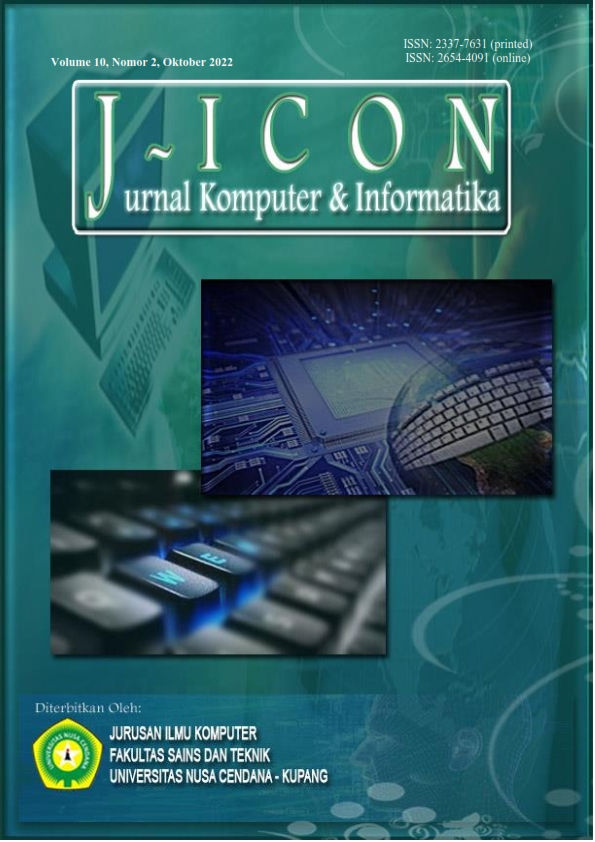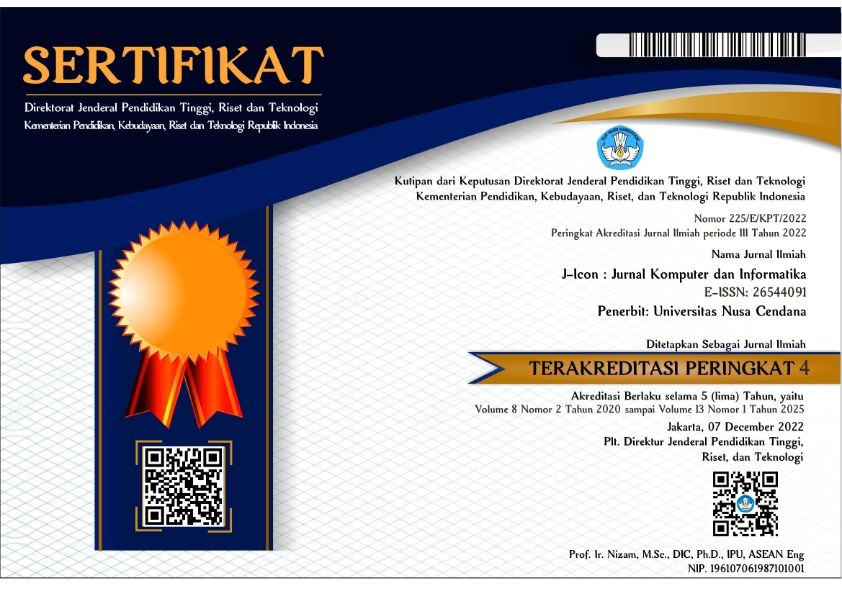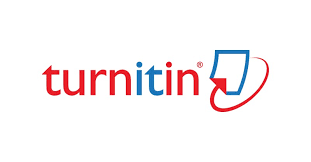EVALUASI USABILITY SISTEM BORDER CONTROL MANAGEMENT DENGAN METODE SYSTEM USABILITY SCALE DI TEMPAT PEMERIKSAAN KEIMIGRASIAN MOTAAIN
Abstrak
Sistem Border Control Management (BCM) merupakan sistem manajemen berbasis teknologi yang mengawasi wilayah perbatasan negara dan berfungsi menangani kegiatan pemeriksaan keimigrasian terhadap orang yang akan keluar maupun masuk Negara Republik Indonesia melalui Tempat Pemeriksaan Keimigrasian. Namun apabila sistem ini tidak berfungsi dengan optimal, maka akan mengganggu penyelenggaraan tugas keimigrasian. Oleh sebab itu, perlu adanya pengukuran usability terhadap Sistem BCM. Usability adalah suatu ukuran kualitas yang mampu menilai mudahnya suatu tampilan antarmuka sistem atau situs web yang dipakai pengguna dengan mempertimbangkan kriteria-kriteria tertentu. Salah satu jenis pengukuran usability adalah System Usability Scale (SUS) yang dilaksanakan dengan memakai serangkaian kuesioner. Penelitian ini bertujuan mengetahui hasil usability dari Sistem BCM dengan menggunakan metode SUS. Jenis data yang didapat dari penelitian ini adalah data primer yakni jawaban responden terhadap kuesioner yang diberikan. Dalam penentuan sampel, teknik yang digunakan adalah teknik sampling jenuh yaitu teknik penentuan sampel dengan semua anggota populasi digunakan sebagai sampel. Hasil dari penelitian ini menunjukan bahwa nilai usability dari Sistem BCM yang diperoleh menggunakan System Usability Scale adalah 76,67. Hal ini menunjukkan bahwa tingkat penerimaan penggunaan Sistem BCM termasuk kategori “Acceptable” yang berarti Sistem BCM dapat diterima oleh pengguna. Selanjutnya adjective rating usability dari Sistem BCM termasuk dalam kategori “Good” dan skala kegunaannya termasuk kategori “B”.
##plugins.generic.usageStats.downloads##
Referensi
Pemerintah Indonesia, Undang-Undang Dasar Republik Indonesia 1945 Perubahan ke-4. 2002.
Pemerintah Indonesia, Undang-Undang Nomor 6 Tahun 2011 tentang Keimigrasian. Lembaran Negara Republik Indonesia Tahun 2011, Nomor 5216. Sekretariat Negara. Jakarta. 2011
Kementerian Hukum dan HAM, Keputusan Menteri Hukum dan HAM Nomor M.HH-01.GR.02.01 Tahun 2014 tentang Tempat Pemeriksa Keimigrasian, 2014.
Direktorat Jenderal Imigrasi, Peraturan Direktur Jenderal Imigrasi Nomor IMI 459.GR.01.02. Tahun 2011 tentang Standar Operasional Prosedur Border Control Management (BCM), 2011.
J. Nielsen, “Usability 101: Introduction to Usability”, Nielsen Norman Group. 2012. [Daring]. Tersedia pada: https://www.nngroup.com/articles/usability-101-introduction-to-usability/.
J. Rubin dan D. Chisnell, Handbook of Usability Testing: How to Plan, Design, and Conduct Effective Tests. United States of America: Wiley Publishing, 2008.
J. Brooke, “SUS: A Retrospective,” Journal of Usability Studies, vol. 8, no. 2, hlm. 29-40, 2013. [Daring]. Tersedia pada: https://www.researchgate.net/profile/John-Brooke-6/publication/285811057_SUS_a_retrospective/links/5ee5c4a792851ce9e7e38a75/SUS-a-retrospective.pdf.
J. Hamidi dan C. Charles, Hukum Keimigrasian Bagi Orang Asing di Indonesia. Jakarta Timur: Sinar Grafika, 2015.
Kementerian Hukum dan HAM, Peraturan Menteri Hukum dan HAM Nomor 44 Tahun 2015 tentang Tata Cara Pemeriksaan Masuk dan Keluar Wilayah Indonesia di Tempat Pemeriksaan Imigrasi, 2015.
Pemerintah Indonesia dan Pemerintah Timor Leste, Arrangement between the Government of the Republic of Indonesia and the Government of the Democratic Republic of Timor-Leste on Traditional Border Crossings and Regulated Market, 2003.
C. M. Barnum, Usability Testing and Research. New York: Longman, 2002.
J. Brooke, “SUS-A Quick and Dirty Usability Scale,” Usability Evaluation in Industry, vol. 189, no. 194, hlm. 4-7, 1996, doi: 10.1201/9781498710411-35.
W. U. Sari, “Analisis Usability Pada Sistem Informasi Akademik Mahasiswa Universitas Muhammadiyah Riau Menggunakan Metode System Usability Scale (SUS),” Skripsi, Universitas Islam Negeri Sultan Syarif Kasim, 2019. [Daring]. Tersedia pada: https://core.ac.uk/download/pdf/300873722.pdf.
##submission.copyrightStatement##
##submission.license.cc.by4.footer##Penulis yang mengirimkan naskah harus memahami dan menyetujui bahwa jika diterima untuk diterbitkan, penulis memiliki hak cipta dan memberikan jurnal hak publikasi pertama dengan karya yang dilisensikan secara bersamaan di bawah Creative Commons Attribution (CC-BY) 4.0 License yang memungkinkan orang lain untuk berbagi karya dengan pengakuan kepenulisan karya dan publikasi awal dalam jurnal ini.
 Emris Yeverson Kaja Jade(1*)
Emris Yeverson Kaja Jade(1*)




